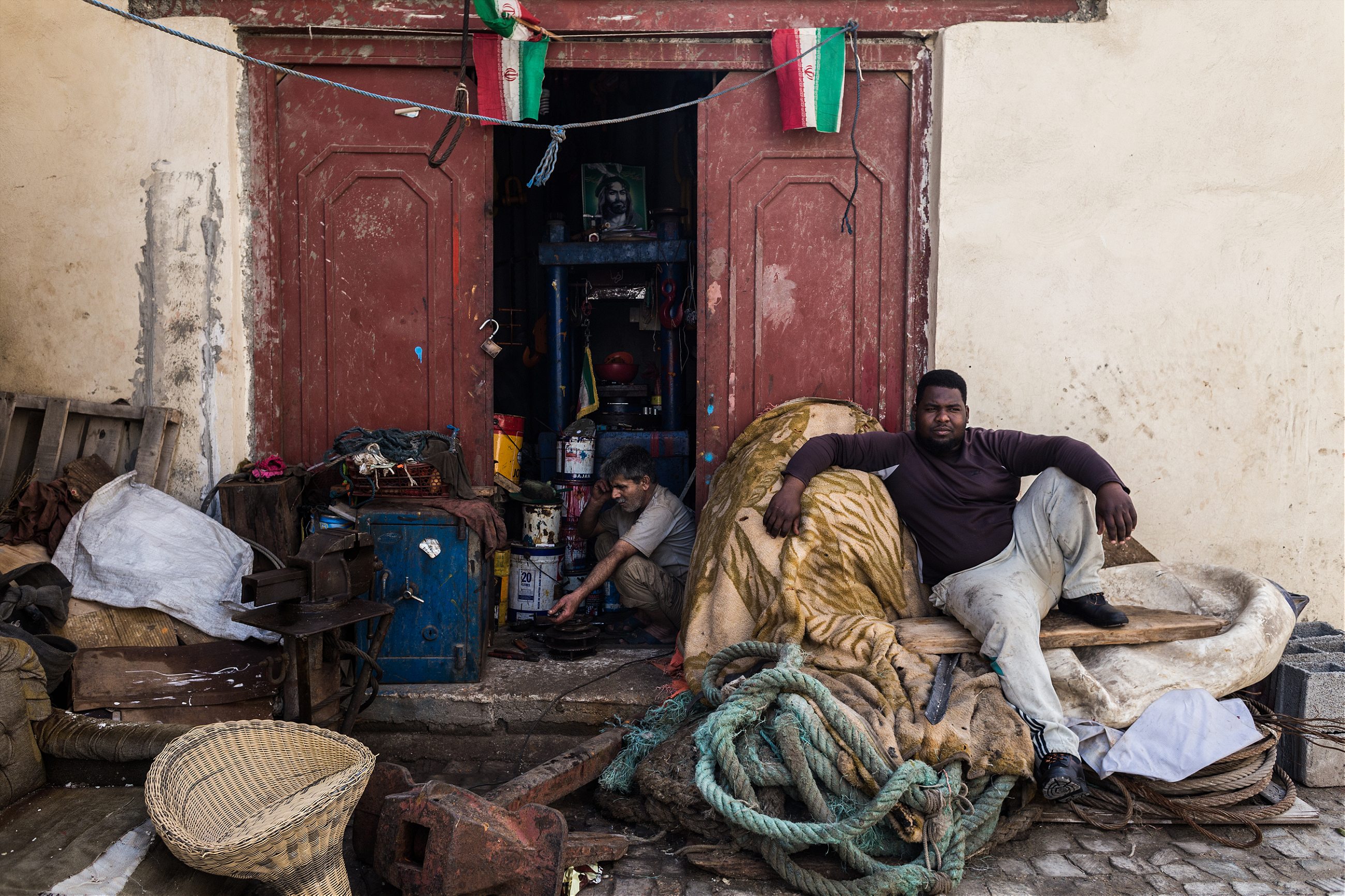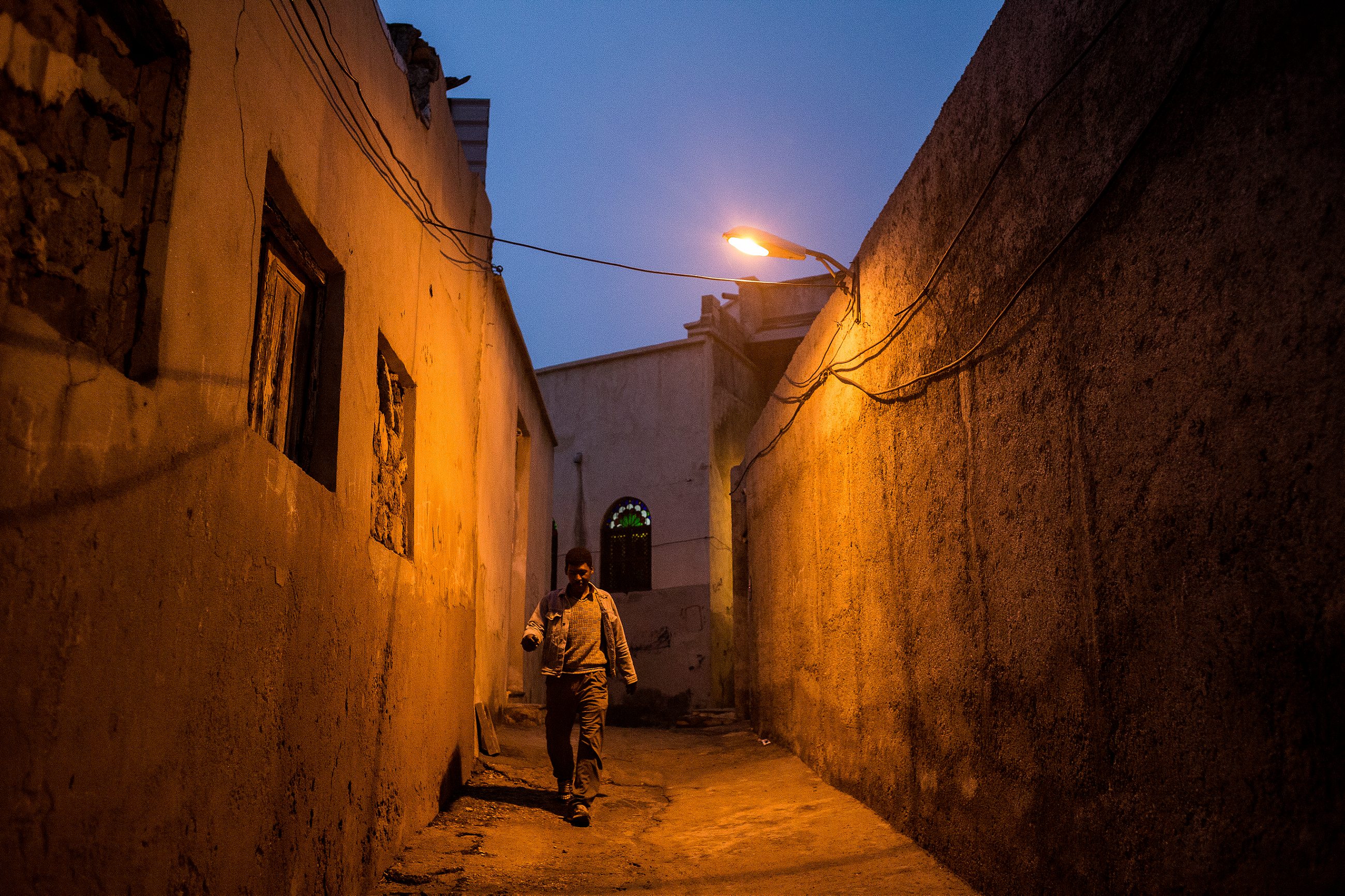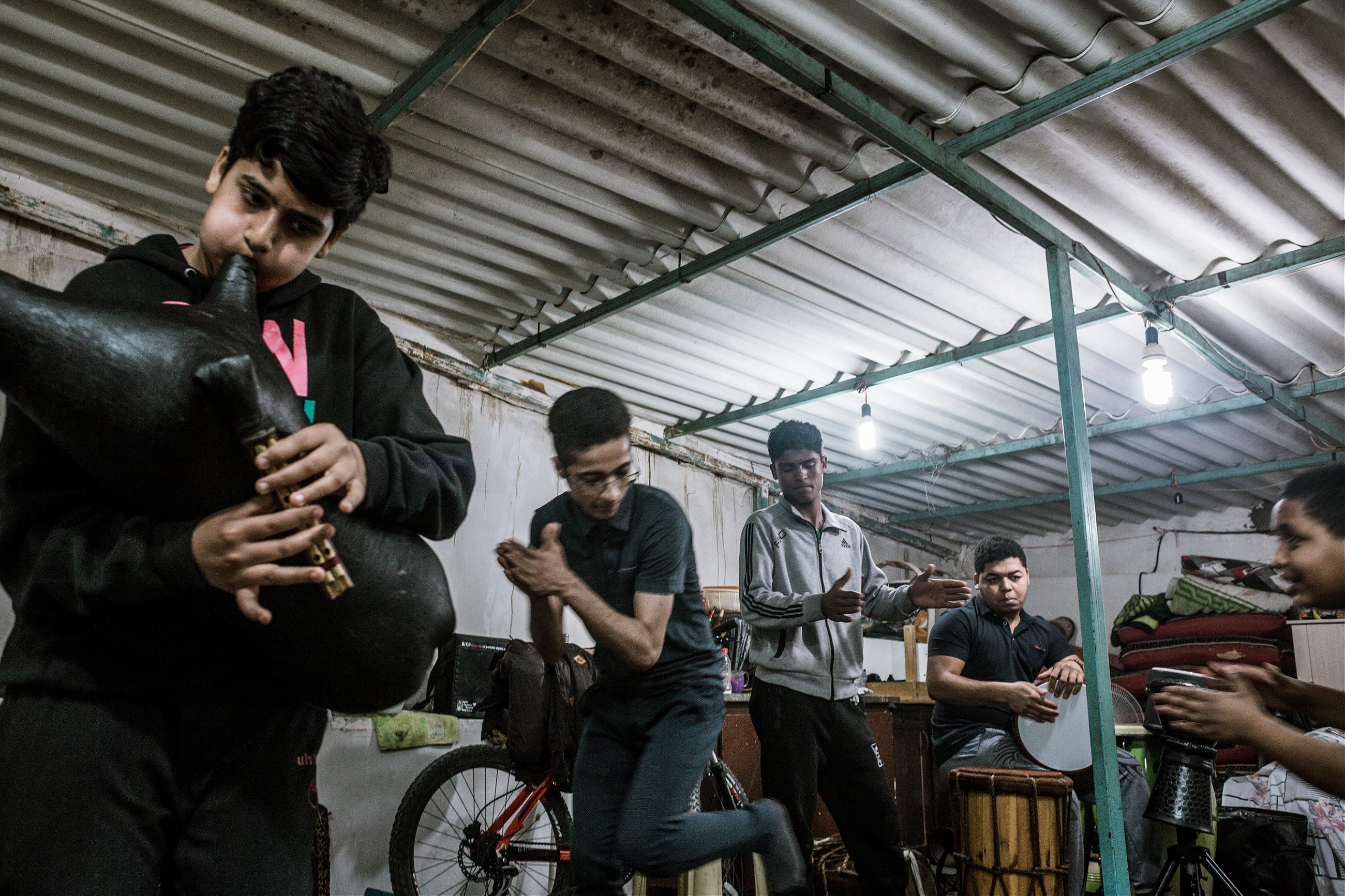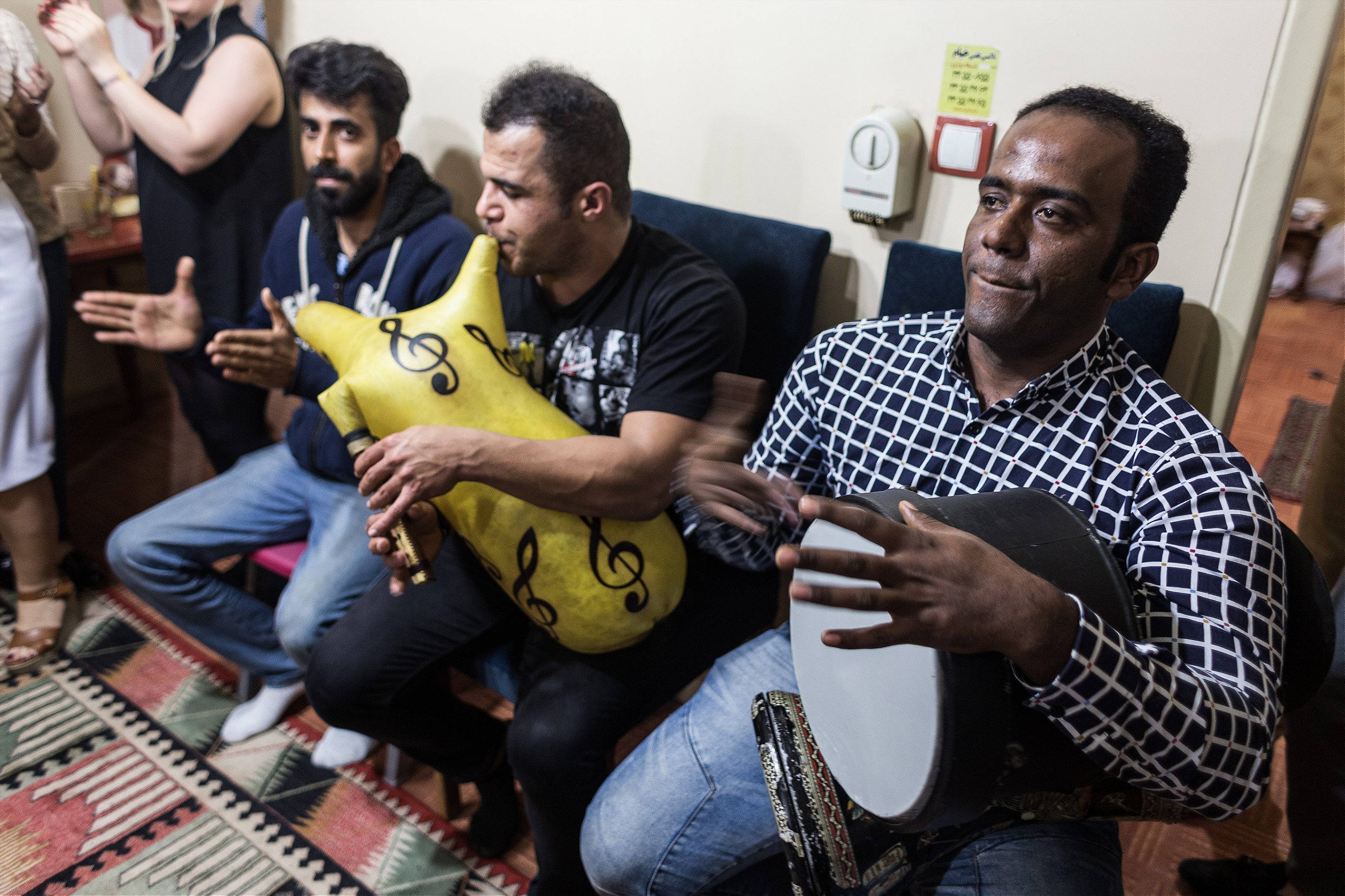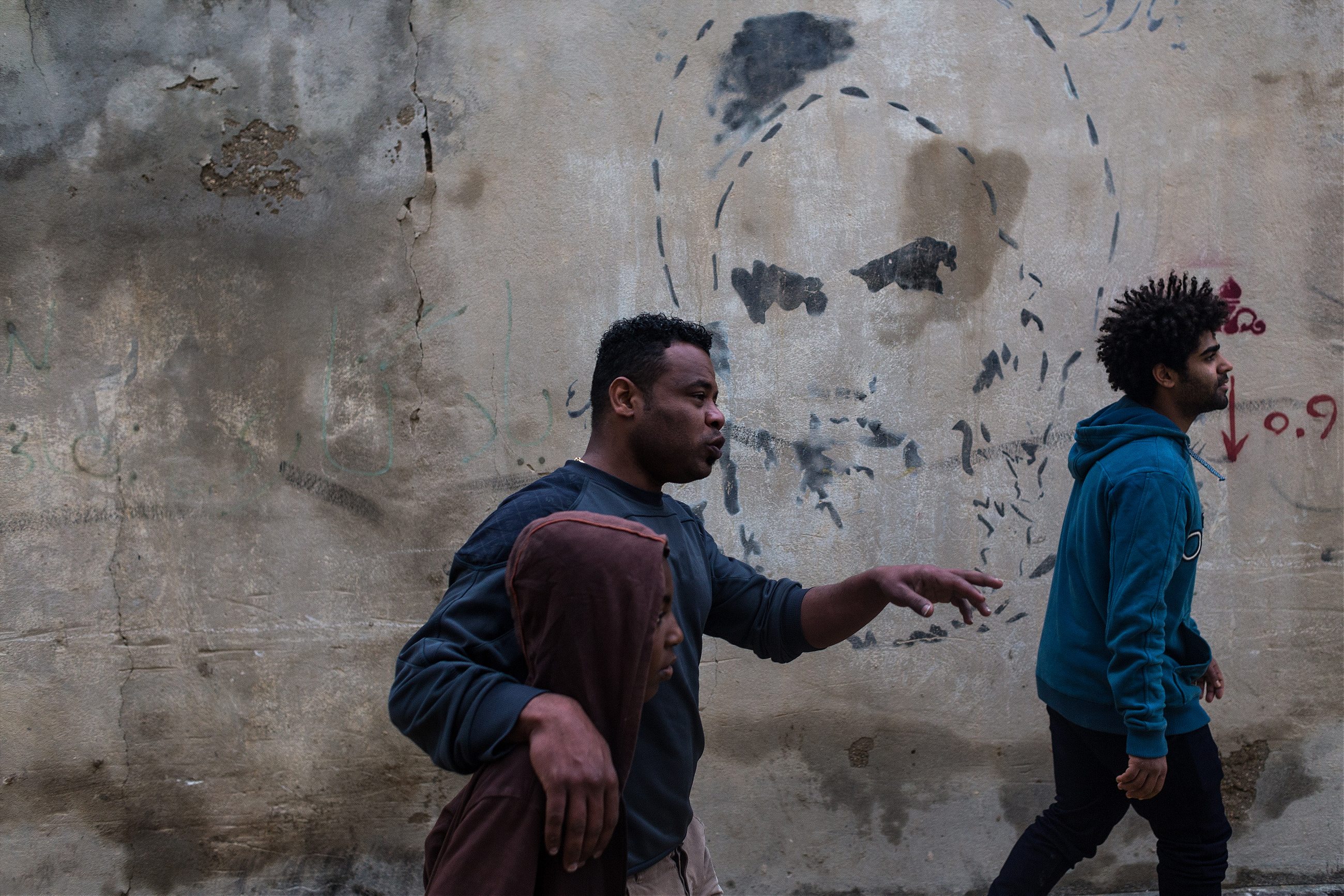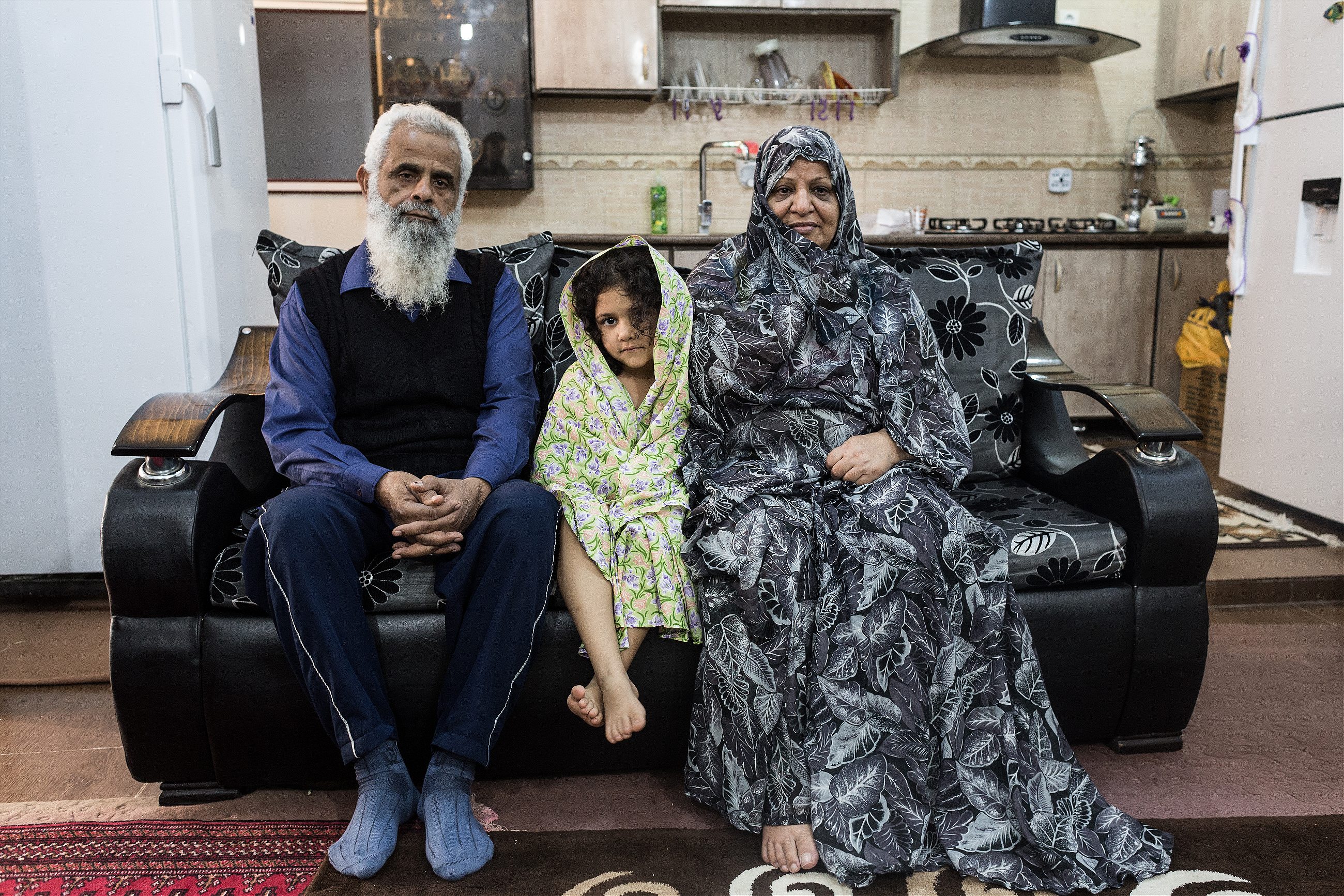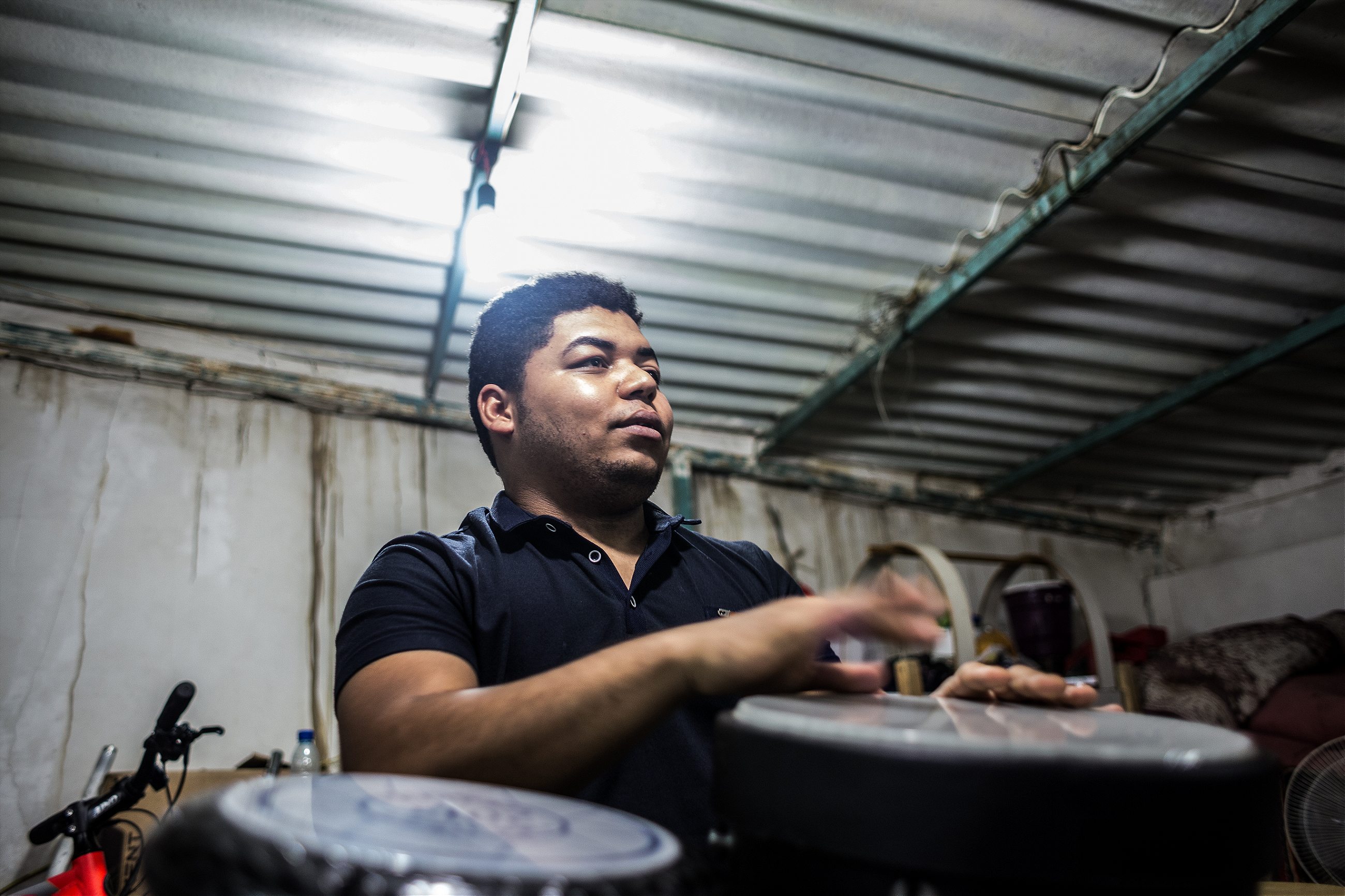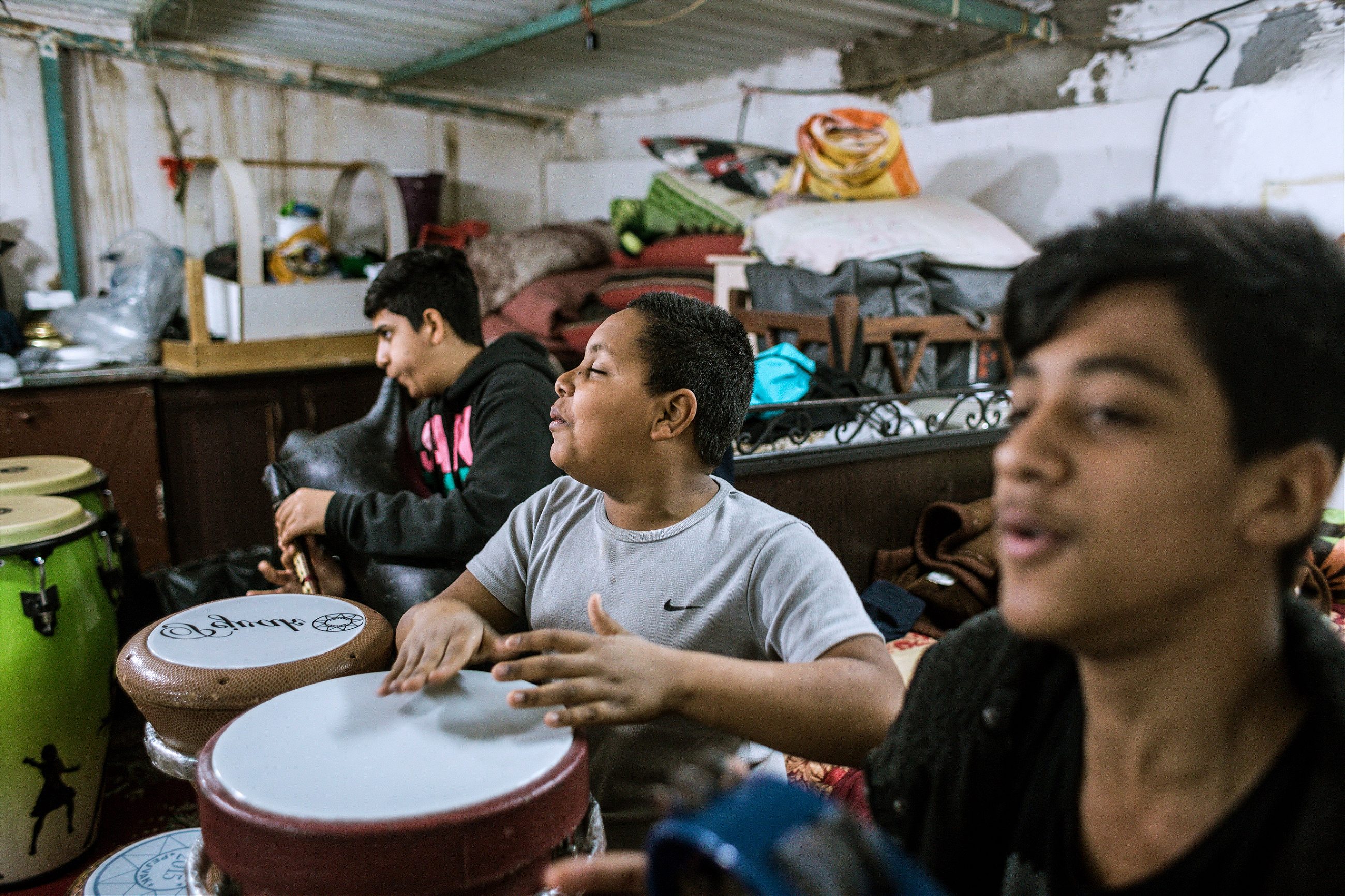This small group of young musicians from tiny Afro-Iranian community tours across the country, performing at concerts and folk music festivals.
The kids and their mentors gather inside a small communal storeroom in Behbahani, the heart of the Afro-Iranian community in Iran’s southwestern coastal city of Bushehr. The youngest one is no more than 12 years old. Several times every week, they rehearse an energetic and hypnotic style of music unique to their community, sometimes called Bandari, which combines Persian elements with tones and rhythms carried to the region by their forebears—Africans who were brought to the Gulf and sold as slaves. The group calls themselves Bambasi, proudly adopting the word used to describe Iranians of African descent.
Residents of the Afro-Iranian community speak of Bambasi with pride. They are the cultural heart of the community, a bastion of African influences that traces its heritage to the slave trade in Persia. While the British Empire put an end to slavery in 1833 and the Americans fought a Civil War to abolish it, the practice, though less prevalent, persisted in Iran well into the 20th century—it was only officially declared illegal in 1929.
It is hard to get a precise read on how many people of African descent live inside Iran, partly because their history is gradually being lost or forgotten. One scholar who has studied African diaspora in Iran estimates that Afro-Iranians constitute around 10-12% of the population of southern Iran.
Photographer Giacomo Sini visited the community twice, once in 2018 and once the year before, documenting the lives of the Afro-Iranians in Behbahani, focusing on the music of the community and the young men of Bambasi.
